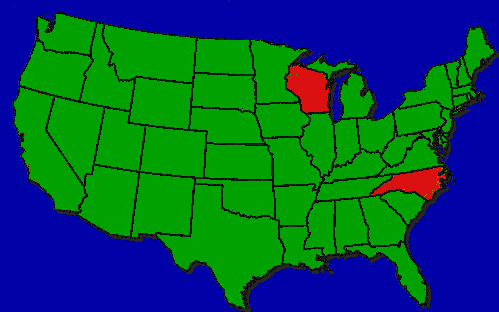
Circle the area on this map

D. Milwaukee officials had hoped the Democratic convention would draw about 50,000 visitors to the city of 1.6 million people and pump $250 million into the local economy. Joe Biden, the Democratic presidential nominee, made his acceptance speech near his home in Delaware.
A. Charlotte officials had hoped a convention would give the city of nearly 900,000 people a boost of $200 million, but state pandemic restrictions caused Republicans to look at other cities. Ultimately, surging coronavirus cases forced the party to scale back to a mostly virtual meeting. President Donald Trump is to make his acceptance speech at the White House.
C. Last month, Republicans abruptly canceled their Jacksonville party plans because of a big spike in covid-19 cases and deaths in Florida - officially nicknamed the Sunshine State.
B. North Carolina and Wisconsin are considered swing states. Both states voted for Democrat Barack Obama in 2008 and Republican Donald Trump in 2016. In close races, presidential campaigns will target competitive states over safe states that usually vote for one party or the other.